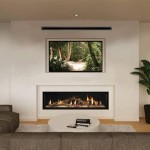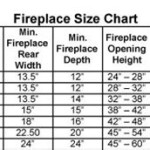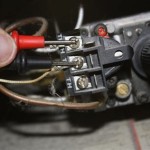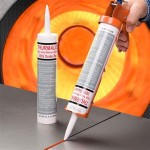```html
Long Island Fireplace Repair: Ensuring Safety and Efficiency
Fireplaces serve as both an aesthetic centerpiece and a functional heating source in many Long Island homes. Regular maintenance and timely repairs are crucial for ensuring their safe and efficient operation. Neglecting necessary upkeep can lead to a variety of problems, ranging from minor inconveniences to serious safety hazards. This article aims to provide comprehensive information regarding fireplace repair on Long Island, covering common issues, preventative measures, and the importance of professional services.
The climate on Long Island, characterized by cold winters and humid summers, can significantly impact the condition of a fireplace. Fluctuating temperatures and moisture levels can contribute to the deterioration of various components, including the chimney, firebox, and gas lines. Therefore, understanding the specific challenges posed by the local environment is essential for effective fireplace maintenance and repair.
Common Fireplace Problems on Long Island
Several issues commonly arise with fireplaces on Long Island. Addressing these promptly can prevent more costly and extensive repairs down the line. Understanding the symptoms of these problems empowers homeowners to identify potential concerns early on.
One frequent problem is chimney damage. The chimney is exposed to the elements year-round, making it susceptible to cracking, spalling (surface deterioration), and water damage. Water intrusion can lead to the weakening of the chimney structure and can also damage the interior of the home. Freeze-thaw cycles during the winter months exacerbate this issue, causing expansion and contraction that can further compromise the chimney's integrity. Regular chimney inspections are vital for identifying and addressing these problems before they escalate.
Another common issue is a faulty damper. The damper is designed to seal the chimney when the fireplace is not in use, preventing drafts and heat loss. A damaged or improperly functioning damper can allow cold air to enter the home during the winter and hot air to escape during the summer, leading to increased energy consumption. Dampers can become corroded, warped, or simply stuck, requiring repair or replacement. Inspecting the damper regularly and ensuring it operates smoothly is crucial for maintaining energy efficiency.
Creosote buildup is a serious concern for wood-burning fireplaces. Creosote is a highly flammable substance that accumulates in the chimney as a byproduct of wood combustion. Over time, excessive creosote buildup can significantly increase the risk of a chimney fire. Regular chimney sweeping is essential for removing creosote and preventing dangerous accumulations. The National Fire Protection Association (NFPA) recommends that chimneys be inspected annually and cleaned if necessary, based on usage.
Gas fireplace problems can include issues with the gas lines, pilot light, and burner. Gas leaks are a serious safety hazard and must be addressed immediately by a qualified professional. A malfunctioning pilot light can prevent the fireplace from igniting, while a dirty or damaged burner can result in inefficient combustion and the production of dangerous carbon monoxide. Regular maintenance and inspection of gas fireplace components are crucial for ensuring safe and reliable operation.
The firebox, the area where the fire is built, can also experience problems. Cracks in the firebrick or masonry can compromise the firebox's structural integrity and allow heat to escape, potentially damaging surrounding materials. Repairing these cracks promptly is essential for preventing further damage and maintaining the safety of the fireplace.
Preventative Maintenance for Long Island Fireplaces
Preventative maintenance is key to minimizing the need for extensive repairs and ensuring the longevity of a fireplace. By implementing a regular maintenance schedule, homeowners can identify and address potential problems early on, preventing them from escalating into more serious issues.
Annual chimney inspections performed by a qualified professional are crucial. A certified chimney sweep can thoroughly inspect the chimney for signs of damage, creosote buildup, and other potential problems. They can also provide recommendations for necessary repairs or maintenance. These inspections should include examining the chimney liner for cracks or deterioration.
Regular chimney sweeping is essential for wood-burning fireplaces. As mentioned earlier, creosote buildup is a significant fire hazard. The frequency of chimney sweeping will depend on the frequency of fireplace use and the type of wood burned. Hardwoods tend to produce less creosote than softwoods. A chimney sweep can advise on the appropriate cleaning schedule.
For gas fireplaces, annual servicing by a qualified technician is recommended. This includes inspecting the gas lines for leaks, cleaning the burner, and ensuring the pilot light is functioning properly. The technician can also check the carbon monoxide levels to ensure the fireplace is operating safely.
Ensuring proper ventilation is crucial for both wood-burning and gas fireplaces. Make sure the chimney is unobstructed and that there is adequate airflow to support combustion. Never block the air vents or openings on a gas fireplace, as this can lead to carbon monoxide buildup.
When using a wood-burning fireplace, use only seasoned, dry wood. Wet or green wood produces more smoke and creosote, increasing the risk of chimney fires. Store firewood in a dry, well-ventilated area away from the house. Keep the area around the fireplace clear of flammable materials. Use a fireplace screen to prevent sparks from escaping and consider installing a carbon monoxide detector near the fireplace.
Regularly inspect the firebox for cracks or damage. Small cracks can be repaired with refractory cement, but larger cracks may require more extensive repairs. Consider replacing damaged firebrick to ensure the firebox's structural integrity. Also, inspect the damper to ensure it opens and closes smoothly.
The Importance of Professional Fireplace Repair Services on Long Island
While some minor fireplace maintenance tasks can be performed by homeowners, many repairs require the expertise of a qualified professional. Attempting to repair complex issues without the necessary knowledge and skills can be dangerous and can potentially worsen the problem. Engaging a professional ensures that the repairs are performed safely and effectively, adhering to all relevant codes and regulations.
Professional fireplace repair technicians possess the knowledge, skills, and experience necessary to diagnose and address a wide range of fireplace problems. They are trained to identify potential safety hazards and to perform repairs in a manner that minimizes risks. They also have access to specialized tools and equipment that are required for certain types of repairs.
When selecting a fireplace repair service on Long Island, it is important to choose a company that is licensed, insured, and certified. Licensing ensures that the company meets the required standards for competence and safety. Insurance protects the homeowner from liability in the event of an accident or damage. Certification indicates that the technicians have received specialized training and have demonstrated their knowledge and skills in the field. Look for certifications from organizations such as the Chimney Safety Institute of America (CSIA).
A reputable fireplace repair company will provide a thorough inspection of the fireplace and chimney before providing a repair estimate. The estimate should be detailed and transparent, outlining the scope of work, the materials to be used, and the cost of labor. Be wary of companies that offer excessively low estimates, as this may be an indication of substandard workmanship or the use of inferior materials. Also, verify that the company is familiar with local Long Island codes and regulations concerning fireplace installations and repairs.
Professional fireplace repair services can also provide advice on how to improve the efficiency and safety of a fireplace. They can recommend upgrades or modifications that can enhance performance and reduce energy consumption. They can also advise on the proper use and maintenance of the fireplace to ensure its longevity.
In conclusion, ensuring the proper maintenance and timely repair of fireplaces on Long Island is essential for safety, efficiency, and the preservation of property value. Regular inspections, preventative measures, and engagement with qualified professionals are key components of a comprehensive fireplace care strategy. By prioritizing these aspects, homeowners can enjoy the warmth and ambiance of their fireplaces with confidence and peace of mind.
```
The Best Gas Fireplace Repair Service In Long Island

Fireplace Repair Long Island S And Rebuild Experts New York Ny

The Best Gas Fireplace Repair Service In Long Island

Long Island Fireplace Repair Service Installation Gas Fireplaces

Long Island Fireplace Repair Service Installation Gas Fireplaces

The Best Gas Fireplace Repair Service In Long Island

Gas Fireplace Service And Repair On Long Island

Best Fireplace Repair Service Installation Long Island

The Best Gas Fireplace Repair Service In Long Island

The Best Gas Fireplace Repair Service In Long Island
Related Posts








